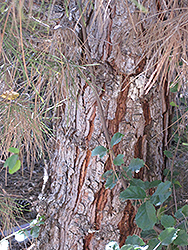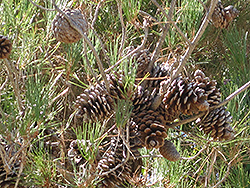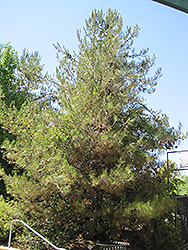It's all about ...
plants

Height: 30 feet
Spread: 20 feet
Sunlight:
![]()
Hardiness Zone: 6b
Other Names: Mondell Pine, Afghan Pine, Elder Pine
Description:
A beautiful accent evergreen with an upright, conical habit of growth that it keeps all its life; tolerant of salt, and thrives in hot, dry enviroments; be careful not to over water
Ornamental Features
Eldarica Pine is primarily valued in the landscape for its distinctively pyramidal habit of growth. It has dark green evergreen foliage. The needles remain dark green throughout the winter. The furrowed gray bark adds an interesting dimension to the landscape.
Landscape Attributes
Eldarica Pine is a dense evergreen tree with a strong central leader and a distinctive and refined pyramidal form. Its average texture blends into the landscape, but can be balanced by one or two finer or coarser trees or shrubs for an effective composition.
This tree will require occasional maintenance and upkeep. When pruning is necessary, it is recommended to only trim back the new growth of the current season, other than to remove any dieback. Gardeners should be aware of the following characteristic(s) that may warrant special consideration;
- Insects
- Disease
Eldarica Pine is recommended for the following landscape applications;
- Accent
- Shade
- Windbreaks and Shelterbelts
Planting & Growing
Eldarica Pine will grow to be about 30 feet tall at maturity, with a spread of 20 feet. It has a low canopy with a typical clearance of 3 feet from the ground, and should not be planted underneath power lines. It grows at a medium rate, and under ideal conditions can be expected to live for 80 years or more.
This tree should only be grown in full sunlight. It prefers dry to average moisture levels with very well-drained soil, and will often die in standing water. It is considered to be drought-tolerant, and thus makes an ideal choice for xeriscaping or the moisture-conserving landscape. It is not particular as to soil type or pH, and is able to handle environmental salt. It is highly tolerant of urban pollution and will even thrive in inner city environments. This species is not originally from North America.
This plant is not reliably hardy in our region, and certain restrictions may apply; contact the store for more information.


